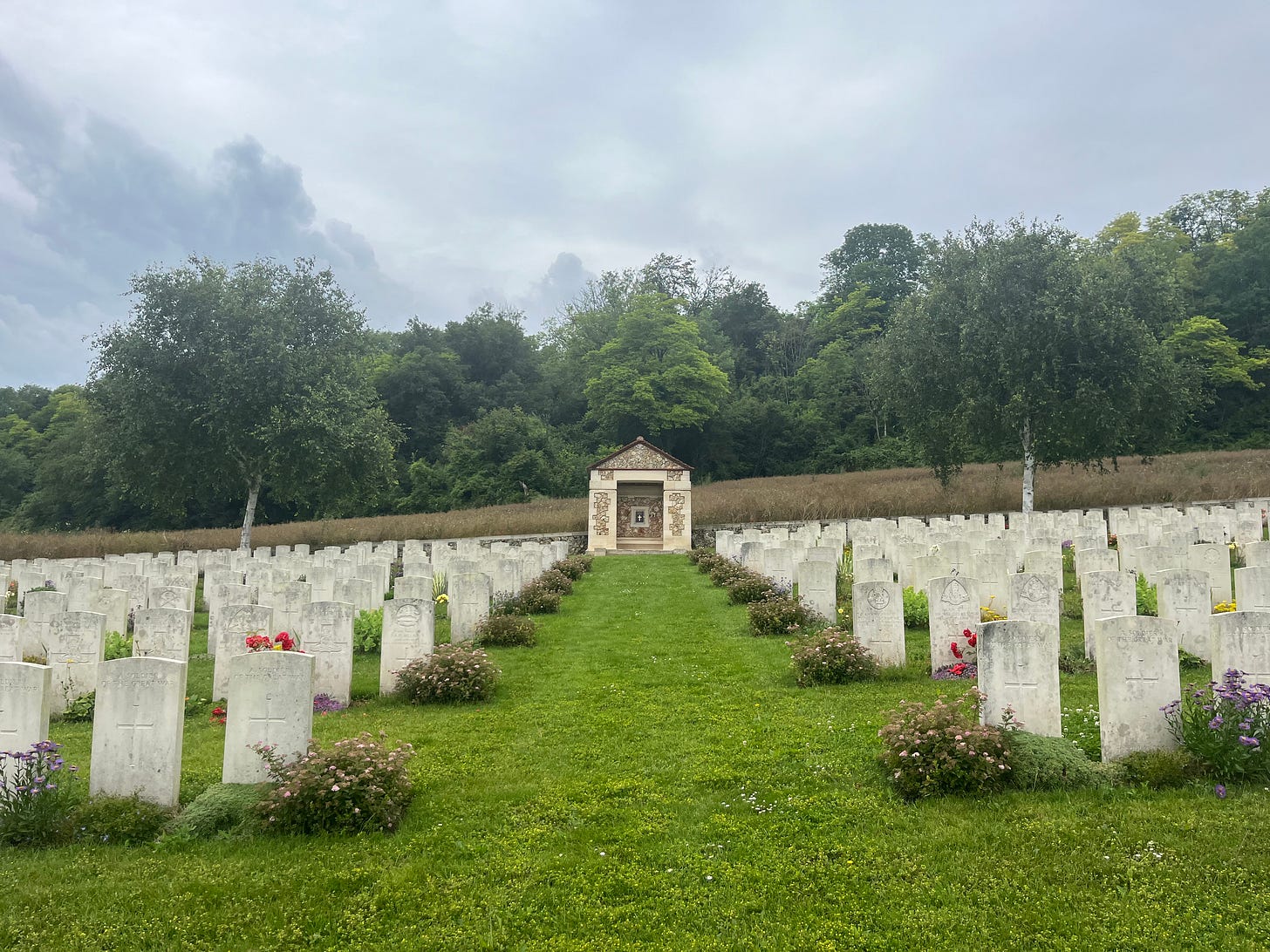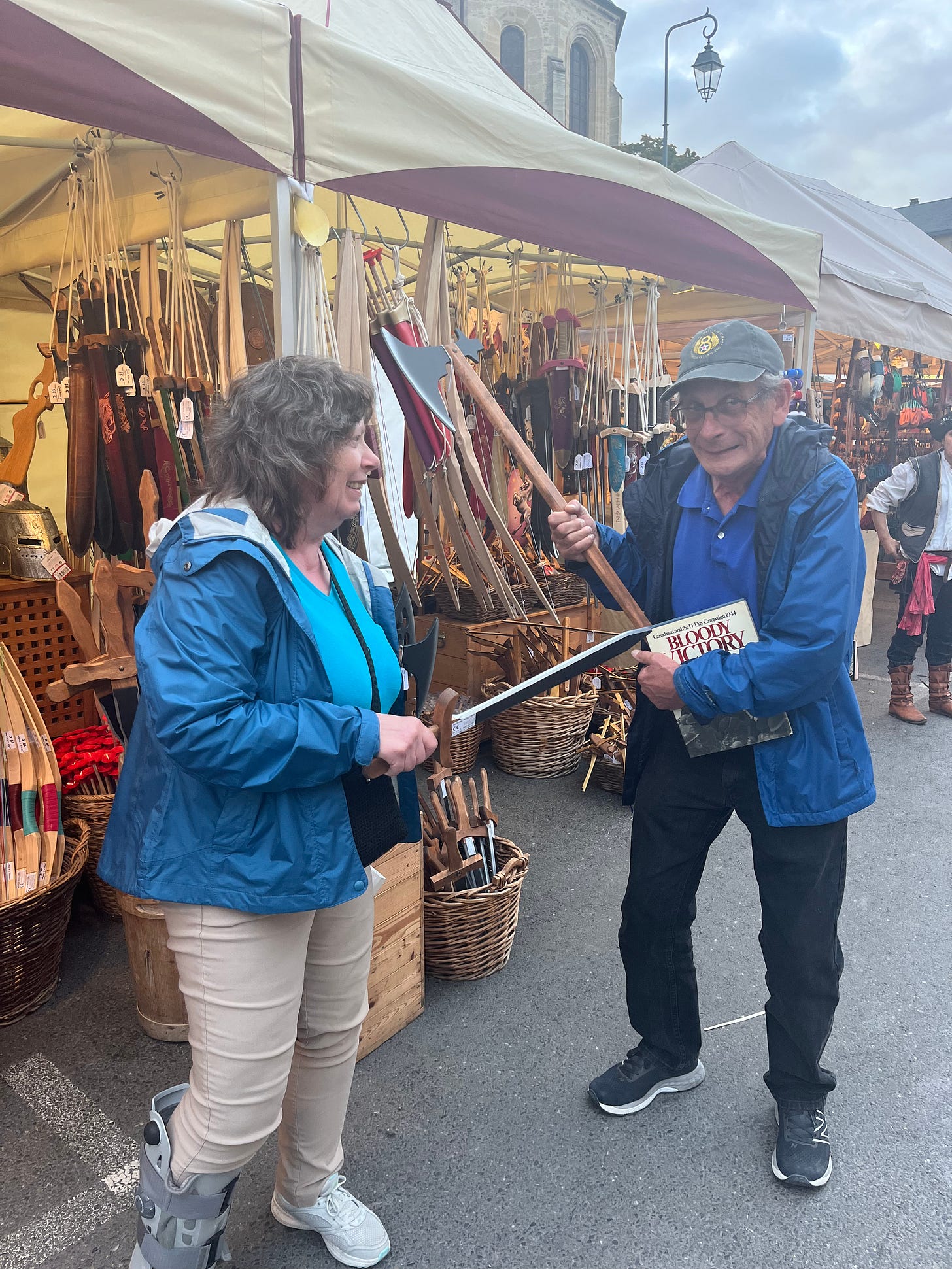Free Weekly Digest
Mel Gibson being wrong, D-day, vikings, aliens and British Nazis. All the clickbait.
Below is your free Weekly Digest of all things History from me. This is where I tell you about what I’ve been waffling about during the week, what events and programmes I might have coming up, and tell you what next week’s content will include. You’ll see snippets of my articles, and teasers about what is to come. This week there is also a selection of photos from the trip I am currently on in France.
This magazine is a reader-backed publication. Each article takes a minimum of a day to write, others more like a week. To help support the time needed for new posts, please consider becoming a subscriber.
THIS WEEK:
On Monday I covered New Mexico as one of my Americana articles. made up of snippets from a road trip I did in the southern half of the state, I deliberately kept it light, because there next one that is coming is grim. There were big nuts, aliens, ancient footprints and of course, cowboys:
A war over steak, sort of…
Who goes to war over cows? The answer is John Simpson Chisum. Born in Tennessee in 1824, he was one of the first ranchers to send his cattle into New Mexico, for sale to the army and to miners in Colorado, and he pissed a lot of people off by doing so. You might be annoyed if 100,000+ cows turned up in your back yard, especially if you happened to be a smaller rancher or a local Native American along the Pecos River, whose livelihood was now in peril thanks to Chisum’s Jinglebob Ranch. The Pecos War of 1876-77 ended in a stalemate, with Chisum escaping charges of rioting, larceny and being a general pain in the arse.
A statue dedicated to Chisum at Roswell, New Mexico
Simmering friction led to another spat called the Lincoln County War in 1878. This time Chisum went to war alongside other established businessmen, lawmen and criminal gangs. Their muscle came in the form of the Lincoln County Regulators, and they were pitted against entities as the Jesse Evans Gang, the Seven Rivers Warriors and the John Kinney Gang. This time they were not only fighting over where to put the cows, but also over who had the right to own the local equivalent of a 7-Eleven.
This feud got so ridiculous, that when Lew Wallace (author of Ben Hur) arrived to take over as the territorial governor he tried to proclaimed an amnesty… which brings me on to one of those on Chasm’s side of this nonsense…
Billy the Kid
Fighting for Chisum and his faction was one Henry McCarty, alias William Bonney, better known as Billy the Kid. New Mexico loves reminding you that he was once a resident…
On Thursday I steered clear of all sensible political content and mocked Dominic Cummings instead. I found a handful of Barnard Castle connected stories that were far more interesting than an idiot and his eye test, including this one from the First World War…
Saving Private Smith
Before Matt Damon came along, only to be relentlessly stalked by Tom Hanks and given to the world by Spielberg, Barnard Castle had its own tragic tale of one family decimated by war. The Smiths lived in Bridgegate, and in the course of the First World War, mother Margaret lost five children, and her husband too.
None of her sons joined the army until the Military Service Act compelled them to do so in 1916. This doesn’t make them unusual by any means. There were upwards of one million unmarried young men alone who were estimated to have neglected to volunteer before compulsion was introduced. There was less pressure on married men, and many more were in protected occupations. Others still gave a variety of reasons; medical, personal, economic at military tribunals when they argued their case for staying at home.
John, Alfred, Frederick and George Smith. No photo has been found so far of Robert. (BBC News)
All of Margaret’s sons went to war. The first to fall was Robert. He was 22 years old when his battalion of the Durham Light Infantry participated in the Battle of Flers Courcelette, and he died, presumably from wounds incurred a few days later. 26-year-old George, serving in the same battalion, was killed just six weeks later as the campaign on the Somme wound down for the winter. Some 150 men were lost in an attack near the Butte de Warlencourt in early November. Whilst Robert has a grave, having died at a casualty clearing station, no trace of George was ever found, and he was commemorated on the Thiepval Memorial to the Missing on the Somme.
The following summer, the British Expeditionary Force’s attacking attentions had shifted to the Battle of Passchendaele. As the campaign kicked off at the Ypres Salient, a third brother, 21-year-old Frederick was also killed. John was the fourth brother lost. He was 37 when he was ordered into a pitiful attack at Poelcappelle. By then, the battle had descended into the muddy chaos so emblematic of fighting during the First World War. Neither brother was ever identified and given a named burial. Frederick is commemorated on the Menin Gate in Ypres. By the time this monument had reached adding casualties in mid-August, there was no space left. John is one of thousands more who then had to be added to another massive memorial at Tyne Cot.
Margaret’s husband, John Smith died in 1918, and her suffering was still not an end. On 22nd July 1918, 31-year-old Alfred Smith died of wounds received during the Second Battle of the Marne.
Which left Wilfred, Margaret’s youngest son. Local lore says that he was brought home to Teesdale after an appeal by a vicar's wife, Mrs Bircham, to Queen Mary, when she pleaded for intervention for the sake of Mrs. Smith and her family. Whatever the method, the result was clear. The authorities acknowledged the devastating impact of the war on this Barnard Castle family and Wilfred was sent home.
According to his youngest daughter, he didn’t like to talk about the war. Regarding his brothers, ‘he just said that they died and that he was brought back to carry on the line. That was all.’ Wilfred remained in Barnard Castle, working as both a stonemason and a chimney sweep. He died in 1968.
ON THE ROAD:
This week I’m taking a family around Normandy, the Somme and the Aisne on a private tour for Istoria Travel. Here’s some of the highlights so far:
Back on the Aisne front for the first time in a while. We overlook this 1914 British battlefield far too easily, as it’s slightly further away, but there are so many stories to tell down there.
I’ve been back to Villers Cotterets, specifically Guards Grave cemetery, which Kipling referred to as the prettiest on the Western Front. The story of how these men received the burial they deserved after being buried in a mass grave in the Forest of Retz forms a whole chapter in the first book I wrote.
Just because British troops were moved north from this front in 1914, doesn’t mean it ceased to claim lives. We also visited Frenchmen killed in the forest.
W
We found Woody of WW2TV in Bayeux (every night so far lol) and much fat was chewed. Including a vociferous debate about the difference between a biscuit and a cake.
I got to introduce a family to Pegasus Bridge for the first time with my Istoria colleague Owen.
We got to cover multiple layers of history at Ranville, from medieval all the way through to 1944
I got to hold a group hostage long enough to bludgeon them with the story of 4 Commando and the Free French on D-Day.
Birthday Bob had a packed day to celebrate his milestone, looking at Pegasus Bridge, Sword and Juno beaches.
And proved that it doesn’t matter how much adulting you do, brothers and sisters will always take the opportunity to thrown down at a medieval festival being held in Bayeux…
NEXT WEEK:
I haven’t forgotten my French WW1 hero, he’s stacked and almost ready to go, but I want to make him the more in depth monthly feature, and I have been sidetracked by revisiting a tiny village on the Aisne with a big part in the war that I want to share, so that will be coming, along with a piece on the modern origins of Europeans meddling in the Holy Land in the 19th century.














